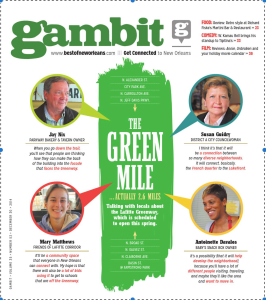Bicycle!
“Act Bicycle! Speak Bicycle! Write Bicycle! Advise Bicycle! Impact Bicycle! Meet Bicycle! Recruit Bicycle! Persist Bicycle! Subscribe Bicycle! Communicate Bicycle!
–Roger Hertz, cycling advocate
What he said. Yep. The mind immediately jumps to the folks who are in front of politicians or talking to the press about “cycling issues.” Of course these people are advocates and they do a lot for the rest of us. But not all of us have the will or wherewithal to do that kind of advocacy.
Here are some of the other advocates: The road rider out on rural roads. The commuter who rides to work…in the rain or snow…in February. The adult with the trailer on the back pulling the little ones. The trail riders. The charity riders. Triathletes. And the folks who put together and lead social rides through our cities at night.
All of these ARE “communicating bicycle,” with every mile they ride. But what are they communicating? How do we act, speak, write, advise, impact, meet, recruit, persist, and subscribe? Are we modeling good behavior? We are told that everyone must share the road, and that bicyclists and motorists share the “same roads, same rules, same rights.” But how do we put it into practice? Motorists insist that “bicyclists never follow the law. They blow through stop signs, they run red lights, they ride the wrong way!” Yes, some do, and when they do, the message they communicate is that they don’t care about the rules as they apply to bicycles.
But motorists often fail to notice that they are often scofflaws, as well. How many motorists never go faster than the speed limit? How many come to a complete stop at every stop sign? OK, that’s what I thought. So perhaps their sanctimonious feelings are a bit misplaced, hmm?
We’re all guilty, just of different offenses.
So remember, whenever, however, wherever you ride, you ARE an advocate. And what you communicate matters.

 The city’s latest project is the “Lafitte Greenway.” Work finishes up this spring on repurposing an old railway bed that runs for 2.6 miles from the edge of the French Quarter out to the Lakefront, pretty much bisecting the city. It will connect many diverse neighborhoods with a multi-use park, with sports facilities, paths, bike lanes, and businesses all along the perimeter. An ambitious, and inspiring, project. The Dec. 30 issue of “
The city’s latest project is the “Lafitte Greenway.” Work finishes up this spring on repurposing an old railway bed that runs for 2.6 miles from the edge of the French Quarter out to the Lakefront, pretty much bisecting the city. It will connect many diverse neighborhoods with a multi-use park, with sports facilities, paths, bike lanes, and businesses all along the perimeter. An ambitious, and inspiring, project. The Dec. 30 issue of “